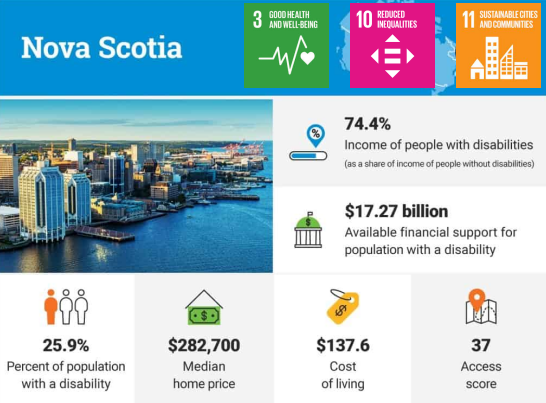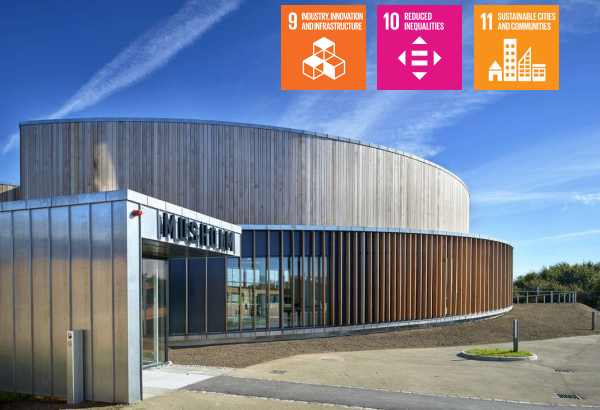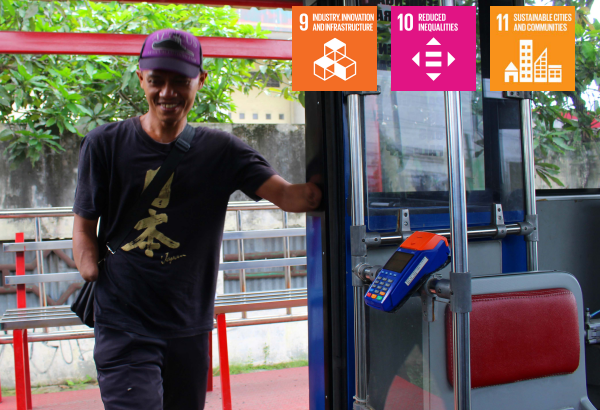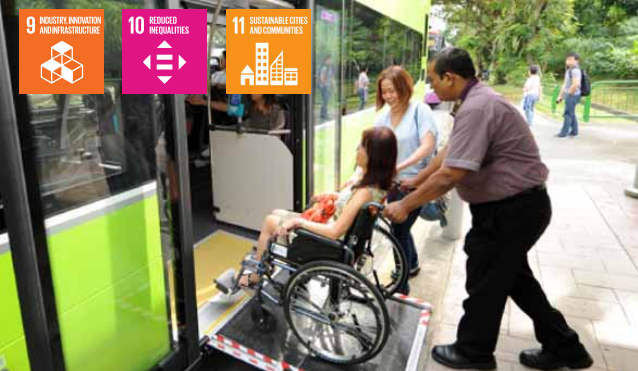【FOCUS】Reduce Inequality Within and Among Countries
1. Nova Scotia, Canada
Access by Design 2030: Achieving an Accessible Nova Scotia

According to the 2017 Canadian Survey on Disability, more than 6 million Canadians aged 15 and over (22% of the population) identify as having a disability.
To effectively ensure all persons with disabilities in Canada the equal opportunity to fully and meaningfully participate in all aspects of life, Nova Scotia launched the Access by Design 2030 project in 2018. The first standards developed were be related to the built environment and education.
In 2020, the province has the second highest access and transit scores per capita and one of the highest rates of physicians, physicians specializing in treating people with disabilities and hospitals per capita.
Check out to see more at:
https://barrierfreecanada.org/principles/
https://www.zolo.ca/blog/best-provinces-accessibility
https://novascotia.ca/accessibility/access-by-design/
2. London, UK
Badge project

An invisible illness is an umbrella term for any medical condition that isn’t easily visible to others. This includes chronic physical conditions such as arthritis, diabetes, fibromyalgia, and others — but also mental illnesses. 96% of people with chronic medical conditions live with an illness that is invisible.
Jess Lindley who has been living with Ankylosing Spondylitis (AS) for nearly seven years invented a new badge Codeword Pineapple for people with invisible illnesses to show others when a flare is striking. For anyone with an invisible disability, they offer a free pineapple pin and information card to help communicate to others/co-workers/co-students on those bad days - just pass the card around and then, when disabilities flare up, pop the pin onto your jacket or lanyard so that co-workers or fellow students are reminded to perhaps offer you a seat in an overcrowded meeting or lecture, or ask someone else to help them move that heavy printer.
Check out to see more at:
https://www.codewordpineapple.org.uk/
3. Zealand, Denmark
Accessible Musholm

Due to physical boundaries and a lack of services, many people with disabilities are not able to enjoy exciting experiences during holidays, sports and conference activities.
To resolve this issues, Zealand built the Musholm, a unique accessibility and universal designed Vacation – Sports – Conference Centre for people with physical, cognitive and communication disabilities. In the design process, Musholm architects integrated the Universal Design to make the building, the furniture, and equipment accessible.
Musholm gives people with disabilities a resort where they can visit and have an active vacation on an equal basis with others. Musholm also challenges stereotypes
about people with disabilities. Moreover, all possible profits are reinvested in Musholm.
Check out to see more at:
4. City of Solo (Surakarta), Indonesia
Accessibility standard for public transportation

To better realize disability rights, the City of Solo implemented the Standard of Accessibility of Public Transportation, Information and Communication in 2006.
It is carried out by the Department of Transportation, Information, and Communication of the local government. The provision on public transportation is enforced at the national level. In the event that Transportation Services do not implement the provisions, government officials intervene. In addition, DPOs promote the availability of sign language interpreters in government offices, terminals, and railway stations, etc., and governmental offices are providing computers with screen readers. T
This project has significantly improved the accessibility, safety, and the dignity of people with disabilities and the elderly in the City of Solo.
Check out to see more at:
5. Singapore
Accessibility Master Plan to create a user-friendly built environment

Singapore, a city state underwent rapid urbanization from the late 1950s, resulting in a high-rise, high density built environment. At the early stage of nation building, the provision of accessibility was not a critical concern. And the issue of accessibility was discussed in the 1980s, which resulted in legislation to provide barrier-free accessibility in buildings under the Building Control Regulations. And the Master Plan is part of this ongoing efforts.
The Master Plan is a holistic framework with a multi-lever and multi-pronged approach to deal with accessibility concerns through Four Strategic Thrusts: 1) Removing existing barriers; 2) tackling future challenges upstream; 3) maintaining existing accessible features; 4) raising awareness and capabilities of the industry and stakeholders.
The project has led to progressive, observable improvements in accessibility. As of 2012, almost 100 per cent of government buildings frequented by the public were barrier-free.
Check out to see more at:


 In Focus | World Cities Day: People-Centred Smart Cities
In Focus | World Cities Day: People-Centred Smart Cities City Stories | Fostering community resilience: A lifeline for the Central African Republic
City Stories | Fostering community resilience: A lifeline for the Central African Republic In Focus | Innovative Education, Empowering Futures
In Focus | Innovative Education, Empowering Futures




















 Tel: +86 020 3780 4434
Tel: +86 020 3780 4434 Email: info@guangzhouaward.org
Email: info@guangzhouaward.org Adress: Unit 01-7, 28th Floor, No. 7, Chunrong 3rd Road, Tianhe District, Guangzhou, Guangdong, 510000, PRC
Adress: Unit 01-7, 28th Floor, No. 7, Chunrong 3rd Road, Tianhe District, Guangzhou, Guangdong, 510000, PRC




